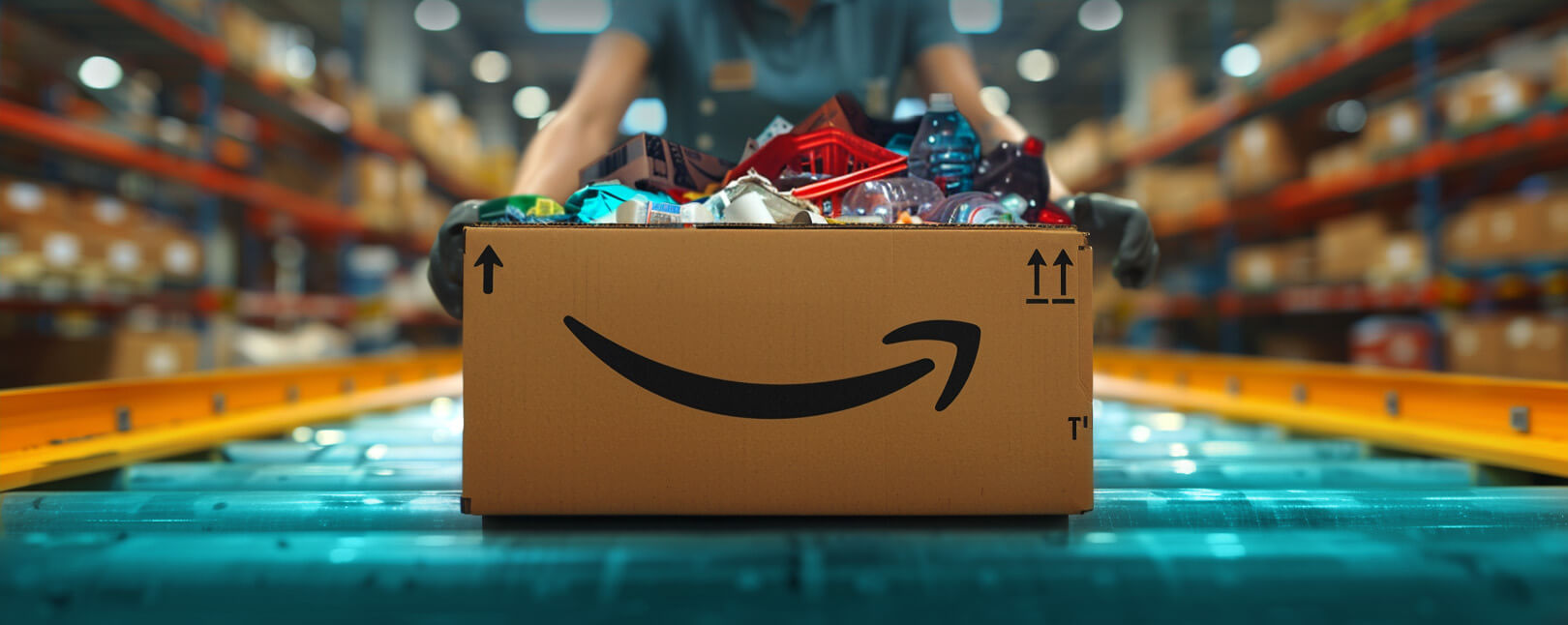What Can Marketplace Merchants Do to Recoup Losses & Prevent Fraudulent Returns?
Return fraud is nothing new. But, it’s becoming a bigger and bigger problem for Amazon Marketplace sellers.
According to the Wall Street Journal, a recent spate of return scams may threaten Amazon's relationship with third-party sellers. And, the ongoing situation has recently escalated, with liability now approaching $101 billion.
Amazon is known for their generous return policy. Unfortunately, scammers have started to take advantage of this. It’s not uncommon for sellers to ship products, only to receive “return” shipments that are, at times, filled with nothing more than trash.
WSJ interviewed Barbara Boschen, a seller of household goods, who has received items like TV cable boxes and previously used soap bars as returns. “Returns are a reality of business I accept, but being held liable for individuals aiming to deceive Amazon, with us as the real victims, is something I don't agree with,” Boschen said. So, how has this become such an issue? And, what can be done to mitigate the problem?
Recommended reading
- Twitch Misadventure Highlights Growing Chargeback Problem
- How Cyber Shoplifting Works | Prevention & Revenue Recovery
- What is Return Fraud? 10 Tips for Merchants to Fight Back
- Post-Holiday Chargebacks Could Undermine 2024 Holiday Sales
- What is Chargeback Fraud? How do You Protect Yourself?
- What is First-Party Misuse? Accidental Chargebacks Explained
Amazon’s Relationship With Sellers Already Strained

Amazon's relationships with its third-party sellers is central to the ongoing lawsuit filed by the Federal Trade Commission against the company. The suit accuses Amazon of “roping sellers into paying steep fees to use Amazon’s advertising and fulfillment services, and penalizing vendors if they offered lower prices elsewhere on the internet.”
At the same time, Amazon is dealing with rising competition for its merchants from alternative eCommerce marketplaces. This is helping push the matter of return fraud on Amazon Marketplace to center stage.
A spokesperson for Amazon conveyed that the company strictly does not tolerate return fraud. They have invested heavily in detection and prevention methods, including dedicated teams to provide sellers with tools to report misconduct and obtain reimbursements.
Yet, some merchants express that filing a claim for retail theft often doesn't justify the effort required. Such claims can require weeks to resolve, and there's no guarantee that sellers will recuperate the item's full value. Not to mention, these merchants are waiting for restitution after having received literal garbage in place of their merchandise.

The Scale of the Problem
In a recent feature for PYMNTS, US Head of Risk at Forter Doriel Abrahams estimated that “approximately 15% of returns are fraudulent,” or represent system abuse. Abrahams also highlights schemes involving empty box returns or resale of items after receiving refunds. Given that retail returns in the US in 2023 alone totaled $744 billion, that's a financial impact of $111.6 billion annually for US merchants.
Richard Kostick, CEO of cosmetics firm 100% PURE, shared that his returns are especially burdensome as they necessitate destruction rather than restocking of the returned goods. His company has implemented a policy that allows customers to retain their purchase instead of returning it. However, this has led to a new form of fraud, where customers make purchases intent on demand refunds and keeping the products.
The prevalence of Amazon return fraud scams has reached a point where criminal groups are promoting their services on social media. The fraud can manifest in various ways, including buying working items and stripping out parts before returning (or “bricking”), as well as returning worn clothing (called “wardrobing”).
In a notable move last year, Amazon initiated legal proceedings against a global entity called REKK, charging it with orchestrating millions in fraudulent returns. Amazon's lawsuit labels REKK as “an international fraud organization,” accusing it of collaborating with Amazon customers and former employees to perpetrate these scams.
How Does This Happen?
Whether selling on Amazon, eBay, or both, merchants will either process orders and returns, in-house or through a third-party logistics provider (3PL). Somewhere along that order fulfillment and return chain, they may discover one or more of the following:
- Returns may arrive in an empty box, exploiting prepaid shipping labels and drop-off services to bypass accurate weight checks.
- Some packages might contain unrelated items like dirt, trash, or potatoes, simulating the weight of the expected return to appear legitimate.
- The product returned could be a different version, such as an older or cheaper model, especially common with electronics.
- Counterfeit items might be returned, creating a risk for sellers who then face accusations of selling fakes themselves.
- Products returned could be intentionally damaged, with buyers exacerbating minor issues to claim they received it in poor condition.
- Late returns, strategically timed to pressure sellers for quick refunds, can give retailers less time to properly vet the request.
- The package may never arrive back to the seller, with platforms sometimes issuing refunds before the return is verified.
- Invalid return reasons may be claimed by buyers to shift return shipping costs to the seller, with vague issues like “not as described.”
Sometimes, adversity breeds innovation. The practice of using and then returning items, known as wardrobing or “free renting,” has become so prevalent that it has inspired new business models around online clothing rentals.
Choosing to outsource fulfillment to a 3PL shifts the inspection and management of returns to an external party. This can vary significantly in experience; some 3PLs offer thorough returns services, while others may simply pass returns back to you for evaluation. Now, if a merchant sells through Amazon, they will likely follow the latter process; this isn’t spectacularly helpful when any of the above situations present themselves.
Without direct access to the buyer, or direct dispute resolution processes in place on Amazon, merchants may be waiting weeks to resolve cases of return fraud…. if they are resolved at all.

What Can Merchants Do?
Amazon states that the company is actively tackling the issue through the use of specialized teams and machine learning technology to identify and stop refund fraud. Amazon's collaboration with law enforcement agencies has resulted in arrests, the breakup of organized retail crime groups, and the initiation of civil lawsuits. However, it's important to recognize that, regardless of the measures Amazon implements, they may not be entirely sufficient for sellers on their platform.
Preventing return fraud, especially on platforms like Amazon, requires a multifaceted approach. It involves both technological solutions and policy changes. Here are several strategies that both Amazon and Marketplace merchants can adopt to mitigate the risk and impact of return fraud:
Implementing these strategies requires a balance between deterring fraud and maintaining a positive customer experience. Overly restrictive policies may deter legitimate customers, so it's important for retailers and platforms to find the right balance that protects their interests while keeping customers happy.














